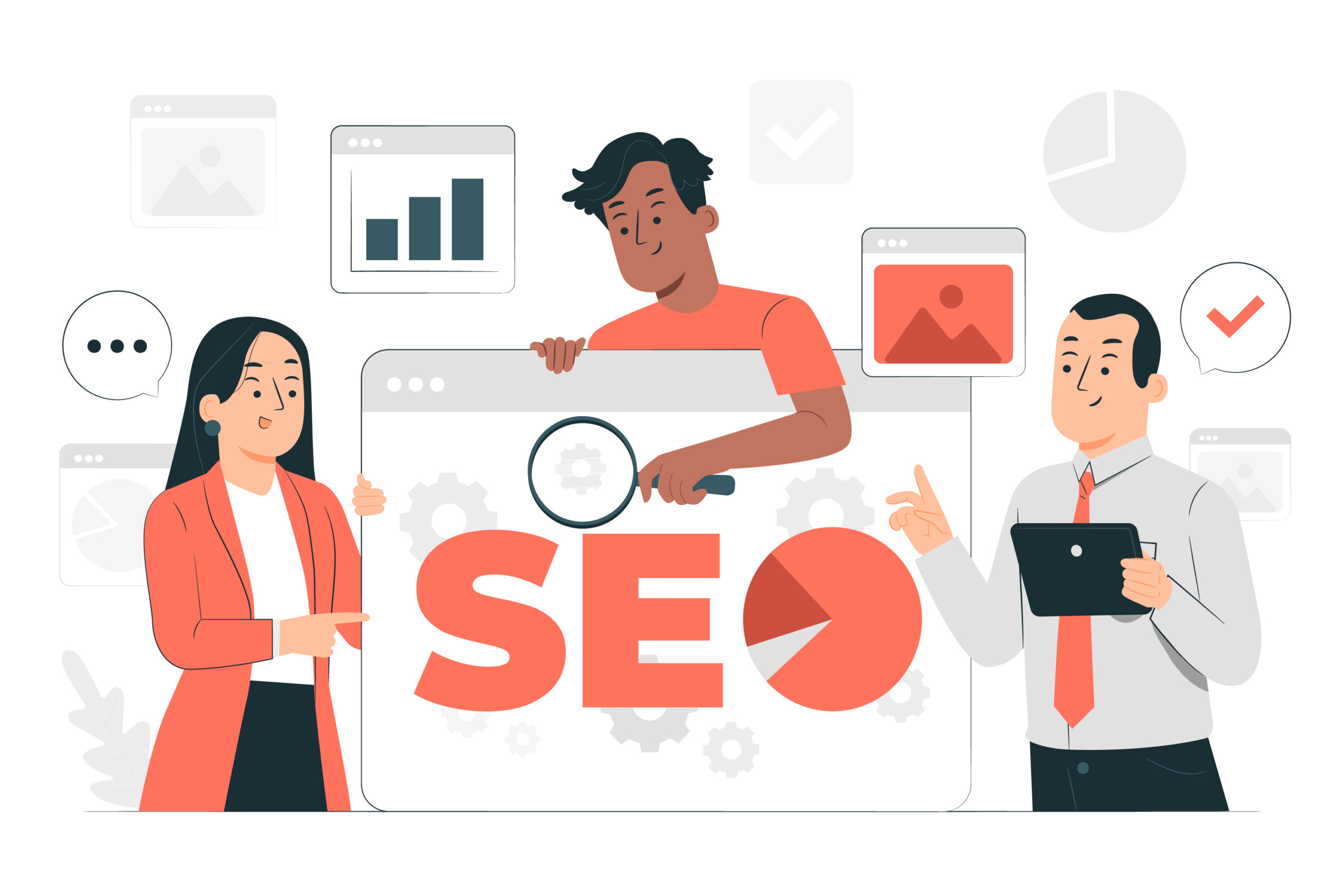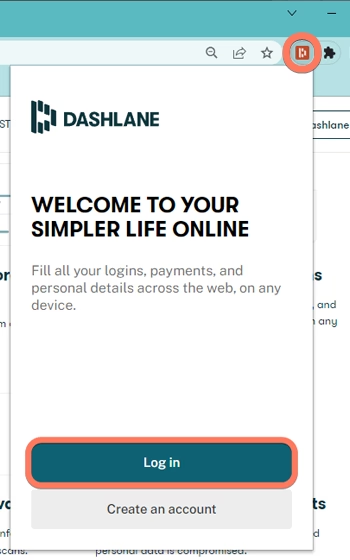Introduction
In today’s digital world, protecting sensitive information from cybersecurity threats is very important. More businesses and official websites in the United States are going online. This makes strong cybersecurity measures, alongside information technology, really necessary. A complete SEO approach plays a key role here. It helps businesses protect their valuable data and build a strong online presence. This blog post looks at how small businesses can use SEO to grow online in a sustainable way. It covers the basics of SEO and how to use cost-efficient strategies.
Understanding SEO and Its Importance in the Digital Age
Imagine you are looking for a product or service online. What do you do? You probably use a search engine like Google. You enter some keywords related to what you need, and then a list of websites pops up. This is where Search Engine Optimization (SEO) comes in. SEO is about making your website easier to find in search results. This can help you get more visitors to your site.
Today, having a strong online presence is essential. There are millions of websites trying to get noticed. If your site appears on the first page of search results, you will be seen more often. This helps with visibility and brand awareness. SEO makes sure your website ranks higher. It draws more potential customers to you. By matching your website to what people are searching for, you create a good and easy online experience.
The Basics of SEO: What It Is and How It Works
Search engine optimization (SEO) is a mix of strategies. It includes on-page and off-page actions to help your website show up better in searches and bring in organic traffic from search engines. So, how does it work? Search engines like Google use tricky algorithms. They crawl through websites, index the information, and check how relevant it is to what people are searching for. These algorithms are updated often. They look at many things, like how well keywords fit, content quality, backlinks, and how user-friendly the site is.
When you optimize your website for these ranking factors, you are more likely to rank higher in search results. This brings in more qualified traffic – people that are truly interested in what you offer. To do this, you need to research keywords carefully. This way, you learn what your target audience is looking for. Adding important keywords naturally in your website’s content, meta descriptions, and headings helps search engines see the topics you cover.
Also, it is very important to create good, informative, and engaging content. By regularly adding valuable content that meets user needs and encourages interaction, you show search engines that your website is a trusted and relevant source of information.
Why SEO Is Crucial for Online Visibility and Growth
Online visibility is key to building a successful presence on the internet. SEO helps to improve this visibility, bringing in more visitors and helping your business grow. When you optimize your website with important keywords, you boost your chances of appearing high in search results. This helps attract people who are looking for products or services like yours.
Additionally, SEO increases user engagement. A well-optimized website gives users a smooth experience. It offers useful content that keeps visitors interested. When users easily find what they need and move around your site effortlessly, they stay longer. They may check out more pages and are more likely to become customers.
The advantages of SEO also include better brand recognition and trust. By regularly appearing at the top of search results, you strengthen your brand’s presence. This leads to greater trust with potential customers. Higher visibility can result in more clicks, raising brand awareness and helping your business grow over time.
Cost-Effective SEO Strategies for Small Businesses
Navigating SEO can be tough, especially for small businesses that don’t have many resources. The great news is there are many affordable SEO strategies that can really boost your online presence and growth. Success is not about spending more money than others, but about being smarter.
You can use local SEO and learn how to optimize your content. These simple tactics can help your website rank higher in search results. They allow small businesses to compete well online, attract more customers, and reach their goals.
Leveraging Local SEO for Targeted Outreach
For small businesses, local SEO is a great way to reach potential customers who are searching for products or services nearby. By optimizing your website for local searches, you can attract people who are close to you.
One of the best strategies for local SEO is setting up and optimizing your Google Business Profile. This free tool helps you manage how your business shows up on Google Maps and in local search results. It gives key information like your business name, address, phone number, website, and customer reviews. It is very important to keep this information the same on all online platforms for local SEO to work well.
You should also think about these local SEO tactics:
- Business Listings: Add your business details to trusted online directories and industry-specific websites.
- Location-Based Keywords: Use location-based keywords naturally in your website’s content, meta descriptions, and title tags.
- Geo-Targeting: If your website serves many areas, use geo-targeting to show content based on where a user is located.
Content Optimization: Balancing Quality and Keywords
Gone are the days when people stuffed content with too many keywords to trick search engines. Now, content marketing is what really matters. It’s all about making helpful and interesting content that meets the needs of your target audience. It should also fit well with how search engines work.
Good keyword research is key to optimizing your content. By learning what words and phrases your audience uses when searching online, you can fit the right keywords into your website. This includes parts like your content, meta descriptions, headings, and image alt text. The important thing is to keep it natural and avoid overusing keywords.
You want to find a good balance. Provide valuable information to your readers while also making it easy for search engines to understand. When you add relevant keywords naturally in quality content, you increase your chances of ranking better. This helps you attract more visitors and shows that your website is trustworthy and valuable in your field.
The Role of Analytics in Shaping SEO Efforts
In SEO, data is very important. When you look at website traffic and how users behave, you get useful insights. These insights help you adjust strategies and improve your campaigns for better results.
By learning how users find your website, which pages they visit, and how they engage with your content, you can customize your SEO work. This will match what users want and how they search. Using this data helps keep your SEO strategy effective and supports steady growth.
Tools and Techniques for Measuring SEO Success
To measure SEO success accurately, leveraging analytics tools and understanding key performance metrics is essential. These tools provide a comprehensive view of your website’s performance, allowing you to identify areas of improvement and track progress over time.
One of the most widely used analytics tools is Google Analytics. This free platform offers a wealth of data, providing insights into user behavior, traffic sources, and conversion rates, akin to some open source alternatives. By exploring metrics such as organic traffic, bounce rate, time on site, and conversion rates, you can gauge the effectiveness of your SEO strategies and identify areas for optimization.
Here’s a breakdown of key performance metrics:
| Metric | Description |
| Organic Traffic | The number of visitors who landed on your website through organic search results. |
| Bounce Rate | The percentage of visitors who leave your website after viewing only one page. A high bounce rate indicates users aren’t finding what they’re looking for. |
| Time on Site | The average amount of time visitors spend on your website. Longer durations indicate engaging content. |
| Conversion Rates | The percentage of visitors who completed a desired action, such as making a purchase or filling out a form. |
Interpreting Data to Refine SEO Strategies
Data analysis is useful when it gives you helpful insights. You need to understand user behavior metrics like bounce rate, time on site, and conversion rates. These are important for improving your SEO strategies and boosting your website’s performance.
For example, if you have a high bounce rate on certain pages, it might mean the content is not what users are looking for. It could also be that the design of the page is not easy to use. By finding these issues, you can fix pages that aren’t doing well, make your content more relevant, improve user experience, and lower bounce rates. All of this leads to better engagement and more conversions.
Keep in mind, SEO is a process you need to repeat. Regularly check how your website is doing, understand user behavior data, and make any changes needed. Using this data-driven way of working will help your SEO strategy keep up with how search engines work, what users want, and your own business goals.
Building a Strong SEO Foundation: Technical SEO
Creating great content and using the right keywords is important, but you also need to focus on technical SEO. Technical SEO is about making your website’s structure and backend work better. This helps search engines find and catalog your site.
Look at technical SEO factors such as site speed, mobile use, site layout, and structured data. By doing this, search engines can access, crawl, and understand your site easily. A website that works well offers a good experience for users and sends good signals to search engines. This helps improve your search rankings.
Site Speed, Security, and Mobile-Friendliness
In today’s fast digital world, people want websites to load fast and easily on all devices. Page speed is important for user experience and is also a big part of SEO. When a website loads slowly, more users leave quickly. This can hurt search rankings and affect your profits.
To make your page load faster, do a few things. First, optimize your images and use browser caching. Next, reduce redirects and choose a good hosting provider. You can use Google’s PageSpeed Insights tool to check your site’s speed and get tips on how to improve it. Also, make sure your website is a .gov website and one of the secure websites. Install SSL certificates to protect the data that goes between your site and users’ browsers. Showing a security padlock in the address bar helps build trust and tells search engines your site is safe.
Finally, being mobile-friendly is essential now. Many people access the internet using mobile devices. So, having a design that changes easily for different screen sizes is very important.
Structured Data and Schema Markup for Enhanced Visibility
Enhancing your website’s visibility on search engines can be done by using structured data and schema markup. Structured data is not seen by users, but it helps search engines understand the meaning of your website’s content. This understanding can lead to better search results and higher click-through rates.
Schema markup is a way of using a common language from schema.org, which is a cooperative effort by big search engines. This helps to give clear hints about your website’s content. When you add schema markup to your website’s HTML code, you can create rich snippets. These rich snippets are better search results that show extra details next to the normal title, URL, and meta description.
Rich snippets make your website stand out more on search engines. This attracts users and may result in more clicks. Even though adding structured data and schema markup might feel complex, there are many resources and plugins that can make it easier.
Link Building Strategies That Drive Organic Growth
Backlinks are like getting a thumbs up from respected websites in your field. They are links from other sites that lead to your site. Creating good backlinks is very important for off-page SEO. It shows search engines that your site is trustworthy and has reliable information.
The idea is simple: if you have many quality backlinks, search engines value your site more. This can help improve your website’s search rank. As a result, it brings in more visitors and helps your site grow over time.
The Importance of High-Quality Backlinks
Not all backlinks are the same. To build a strong backlink profile, quality is more important than quantity. High-quality backlinks come from trusted and relevant websites in your area. They act like approvals from reliable sources. This tells search engines that your site has valuable content that should rank higher.
Domain Authority (DA) is a score made by Moz. It shows how well a site might rank on search engine result pages. Backlinks from sites with a high DA score matter more. They can help improve your own site’s DA, increase trust, and enhance search rankings.
You should aim to earn backlinks naturally. You can do this through methods like guest blogging, creating content that people want to share, and making connections with influencers in your field. These strategies help your site gain authority, attract real backlinks, and support long-term growth.
Creative Approaches to Earning Links
Building high-quality backlinks needs a smart and active plan. The days of just using directory submissions and link exchanges are over. Now, getting valuable backlinks means offering value to other websites and building real connections in your industry.
Guest blogging is a great way to show your skills, reach more people, and earn a link back to your site. Look for trusted websites in your field that accept guest posts. Then, write top-notch and helpful articles that match what their audience wants to read. Also, think about reaching out to influencers. Talk with influencers in your field, engage with what they share, and look for ways to work together on projects or guest blogs.
Making content that people want to share is another smart way to get backlinks. Create useful blog posts, infographics, or videos that give good info and encourage sharing. When other sites find your content helpful, they are more likely to link back to it. This action helps improve your website’s backlink profile.
Conclusion
In conclusion, spending money on effective SEO is a good choice for online growth. When you understand and use SEO strategies that fit your business, you can improve your online visibility. This helps you get the right audience and grow without paid ads. Use local SEO, improve your content, pay attention to technical parts, and build strong backlinks. Each part is very important for making your digital presence better. Keep checking your data, improving your strategies, and staying updated with new trends to stay ahead of your competitors. Treat SEO as a long-term investment. It will bring lasting results and help your online success.
Frequently Asked Questions
What Is the Most Cost-Effective SEO Strategy?
Focusing on creating content based on keywords is very important for SEO. It helps build a strong and affordable strategy. You should also mix in on-page SEO improvements and good backlink strategies. This combination can lead to great results.
How Long Does It Take to See Results From SEO?
SEO is a long journey, not a quick race. The time it takes to see results can depend on how your website is right now and how tough your market is. Usually, most SEO projects take about 4 to 6 months. This is because search engines look at what you are doing and change your rankings based on many different factors.
Can Small Businesses Compete with Larger Players Through SEO?
Sure! Larger companies may have more resources. However, small businesses can take advantage of specific markets. They can focus on local SEO and do detailed analysis of their competition. This way, they can create strong digital marketing plans to beat their competitors.
How Often Should SEO Strategies Be Revised?
It is important to conduct a detailed SEO audit every 6 to 12 months. Search engines change their algorithms often. Market trends also shift. This audit should include looking at your current strategies. You need to update your content and adjust to algorithm changes. It is key to keep your strategy up to date.








